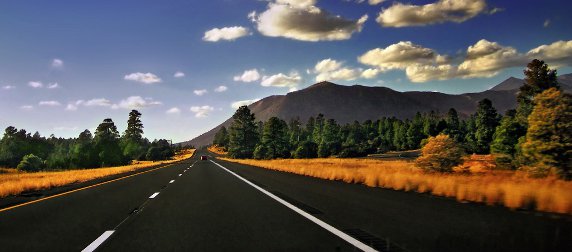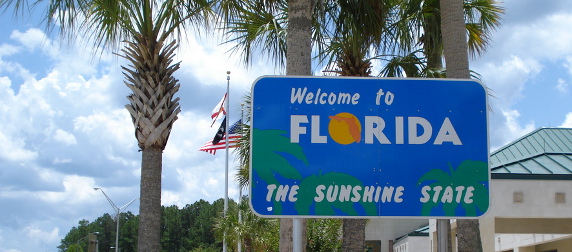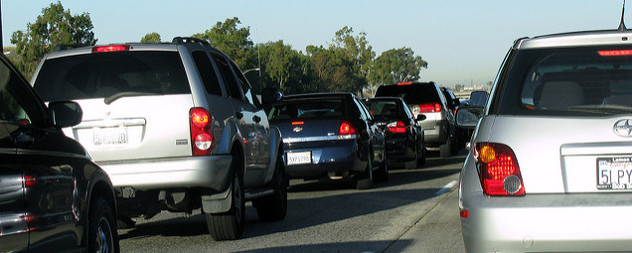Running a firm that has offices from Florida to Oregon and clients in nearly three dozen states means I fly a lot. I have to do it, but I don’t have to like it - and there is not much to like.
Even the best trips require me to get my luggage down to its fighting weight (to avoid extra charges), dance the TSA strip-tease, and hope that the aircraft I need isn’t waiting out some thunderstorm parked over O’Hare. The best domestic trips usually happen on my preferred carriers, which are Southwest, JetBlue and Virgin America. At least these airlines don’t generally go out of their way to make me miserable.
I fly “legacy” carriers like Delta, United and American only when I do not have another good option. Not only do they hit me with the steepest fees for checking bags, changing reservations or sitting in a seat that does not put somebody else’s elbow in my belly, but they are also the ones most likely to overbook a flight and start looking for “volunteers” with whom they can haggle in order to avoid paying the mandatory compensation to which passengers are entitled when they are bumped.
I put up with this when I have no choice, but I don’t have to like it - and I don’t have to seek it out, either, when it comes to my leisure travel. When I travel for pleasure, I want to be able to stuff my bags as heavy as I can lift them and drag as many as I can carry, for no extra charge. I don’t want to pay extra for a reasonably comfortable seat, or when my plans change. I want to have a good, reliable idea of when I will actually depart and when I will arrive. And I want to have some real food, rather than chips, peanuts or cookies, available if I get hungry.
I get all this when I drive.
I would never even consider flying on a trip that I could drive in less than six hours. It just isn’t worth it when you factor in the time it takes to handle ground transportation and the various formalities at either end of the journey. Even if a trip is doable by car in eight to 10 hours or less, I’ll generally still drive. Back when I was on a budget and toting a spouse and several kids, along with all their accoutrements, I thought nothing of starting the car in New York, pointing toward Florida, and driving 18 hours or so to get there.
Not everyone is willing or able to do that, which is why the airlines do a good business flying leisure travelers from starting points far and near to destinations like Orlando and Miami. Yet, in this genuinely remarkable country, nearly everyone has someplace interesting and beautiful - and even relatively comfortable in the summer - within driving range.
Being fairly well-traveled, I thought I would offer some suggestions. I am not going to list the obvious places like Yellowstone or the Grand Canyon, not because they are not worth seeing, but because travelers don’t need help thinking of them. I’m not going to name major tourist spots like San Francisco, Las Vegas and Branson, Mo., for the same reason. Besides, in my view, going to Las Vegas in the summer is just plain crazy. That might be because I like to step outdoors at least once per day.
Today and tomorrow, I will offer five places you might not have considered. All 10 are within eight hours or so of at least one major city. Most involve mountains, beaches or both, because a lot of us like to relax near mountains and beaches. All are beautiful in their own way.
1. Pittsburg, N.H. Tucked away in the far northernmost reaches of New Hampshire, bounded by Quebec, Maine and Vermont, Pittsburg, N.H. is the largest town (by area) in the lower 48 states - but one in which the population of moose outnumbers that of people. You won’t find any nightlife here, unless you count driving along Route 3 with a powerful flashlight, shining it into the woods to count the moose along the roadside. You will find, however, the four lakes that form the headwaters of the Connecticut River. This is a place for hunting, fishing, snowmobiling (in the roughly five-month season) or just relaxing. It is also a good place to beat the East Coast heat; with the valley floor some 2,000 feet above sea level, you will need that fall jacket right through midsummer. Drive time: less than five hours from Boston.
2. Chincoteague, Va. This resort island on Virgina’s portion of the Delmarva Peninsula (known in Virginia and Maryland as the Eastern Shore) is the setting for Marguerite Henry’s classic children’s book, Misty of Chincoteague. A herd of federally protected wild horses lives on nearby Assateague Island, a 38-mile long barrier island that serves as a wildlife refuge. These horses made Chincoteague famous, but the entire region is a rural oasis from East Coast hustle. Here the pace of life is still largely dictated by the rhythm of the tides on Chesapeake Bay. Not far away is the spectacular, 14-mile-long bridge-tunnel that crosses the mouth of the bay. On the other side lie the popular tourist destinations of Virginia Beach, Jamestown and Colonial Williamsburg. Drive time: three to four hours from Philadelphia, Baltimore or Washington, D.C.
3. St. Augustine, Fla. I’m biased, because this gem of history and geography is just 25 miles from my own home near north Florida’s beautiful beaches. It has its share of chain stores and tourist traps, but these are just the slag surrounding some real diamonds. Most of downtown St. Augustine is a combination of preserved and restored buildings that date back two centuries or so, but these count as new construction by local standards. The town was founded in 1565, and work on the Castillo de San Marcos, the fortress that dominates the waterfront, commenced in 1672. A stroll through downtown offers many local artists’ studios and galleries, various shops, interesting restaurants tucked into cobblestoned alleys, and an excellent museum recounting the history of the local Minorcan population. Henry Flagler’s grand hotel is now Flagler College. You can tour the city by horse-drawn carriage and by boat; there are “ghost tours” at night. Outside the city limits, coastal Highway A1A offers lovely shoreline scenery and uncrowded beaches stretching from Marineland, 20 miles south of St. Augustine, to Ponte Vedra, some 20 miles north. Many summer visitors rent apartments in beachfront condominiums that line the ocean in the Crescent Beach area; others stay at motels and inns in St. Augustine Beach, opposite the namesake city on Anastasia Island. Other local landmarks include a historic lighthouse and the Alligator Farm, which despite its foreboding name is a very nice and well-run zoological park. Drive time: six hours from Atlanta, five hours from Miami.
4. Cedar Point (Sandusky, Ohio). Do you need to feed your need for speed? I am part of a long line of roller coaster fanatics, and this amusement park on the shore of Lake Erie is the North American Mecca for our kind. Some of the rides’ height requirements are taller than half my relatives. Seriously, this is the only place where it has ever crossed my mind, while riding a roller coaster, that this would be a really stupid way to die. Sure, there are other activities and attractions in the area, but they are not the point. You go here because the only other places you can find a similar experience are all in Japan - and, over there, you have to ride with people who chant in group cheers at baseball games. Drive time: four hours from Chicago, two hours from Detroit.
5. Durango, Colo. You can get to Durango in about seven hours from Phoenix, Ariz. At this time of year, doing so is an excellent idea. Durango also makes this list if I stretch the rules to include Dallas. (Denver does not count; Denverites don’t need Durango). I did drive from Durango to Dallas in a day once - a very long day - and I wanted something to offer people from Texas. (No offense to the Lone Star State, but except for the Gulf beaches, it is not a place I would seek out in summer.) Durango is a good old-fashioned Western mining and ranching town all duded up for modern vacationers. In particular, try the San Juan Skyway, the “road to the sky” that winds among the 14,000-foot peaks of the San Juan Mountains. Let me put it this way: Durango is 6,500 feet above sea level; Dallas sits around 430 feet. Climb out of that heat. Drive time: Don’t bother counting. Texas is as big as it thinks it is.
If none of these choices excited you, or if all of them are too far away, check back tomorrow for destinations six through 10.













July 29, 2013 - 12:02 pm
Pittsburg, New Hampshire may be the largest “town”, in area, in the lower forth-eight states. It is not the largest municipality in area in the contiguous states. Not including any counties, that distinction would go to the City of Jacksonville, Florida with 874.3 square miles which doubles the size of the second largest in area. The City of Suffolk, Virginia with 429.1 square miles within its boundaries, is the second larger in size in area.
A side note: In the Commonwealth of Virginia, a chartered city is independent of a county. It is the only state in The United States that this occurs.
The Chesapeake Bay Bridge-Tunnel that connects the Eastern Shore to the Tidewater, or Hampton Roads area of Virginia is twenty-three (23) miles long. The shore-to-shore length is seventeen and six-tenths (17.6) miles long.
I did thoroughly enjoy your article and found it to be well written.